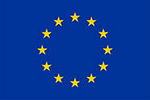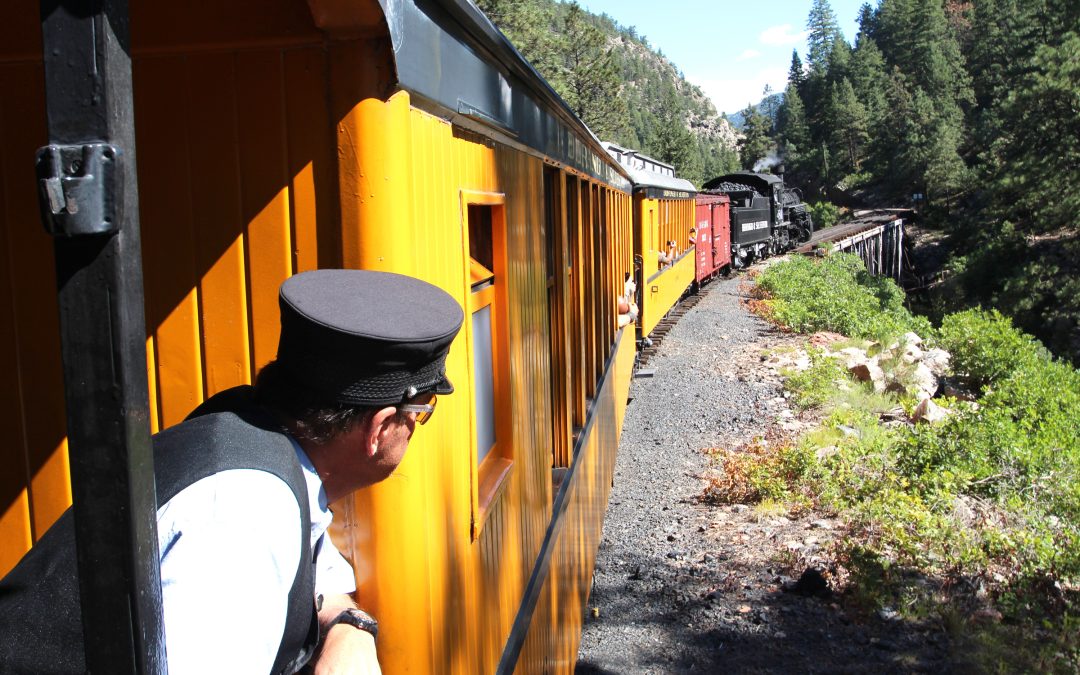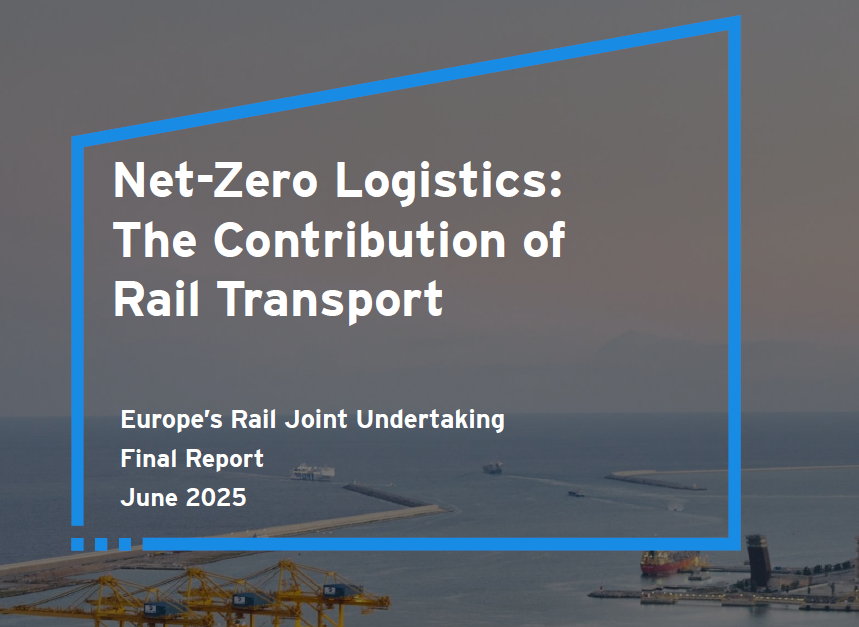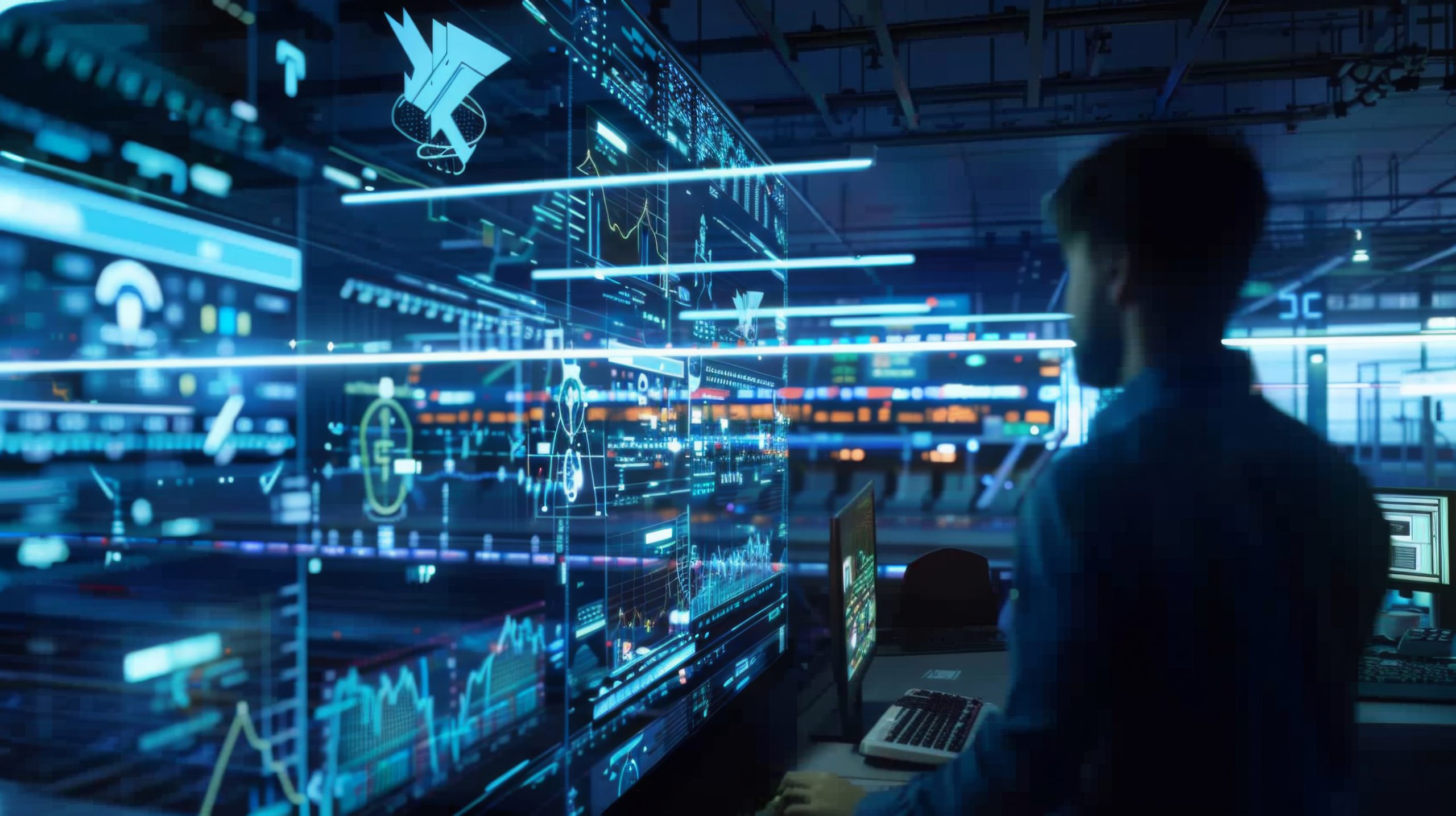Europe must take decisive steps to simplify and modernise its rail systems to strengthen competitiveness,...
For the last edition of the Shift2Rail newsletter before the summer break, our Executive Director got talking to the European ERTMS Coordinator, Matthias Ruete.
Read the interview to find out about the key elements positioned to accelerate ERTMS deployment, as well as how we can learn from other modes of transport to aid the evolution of rail.
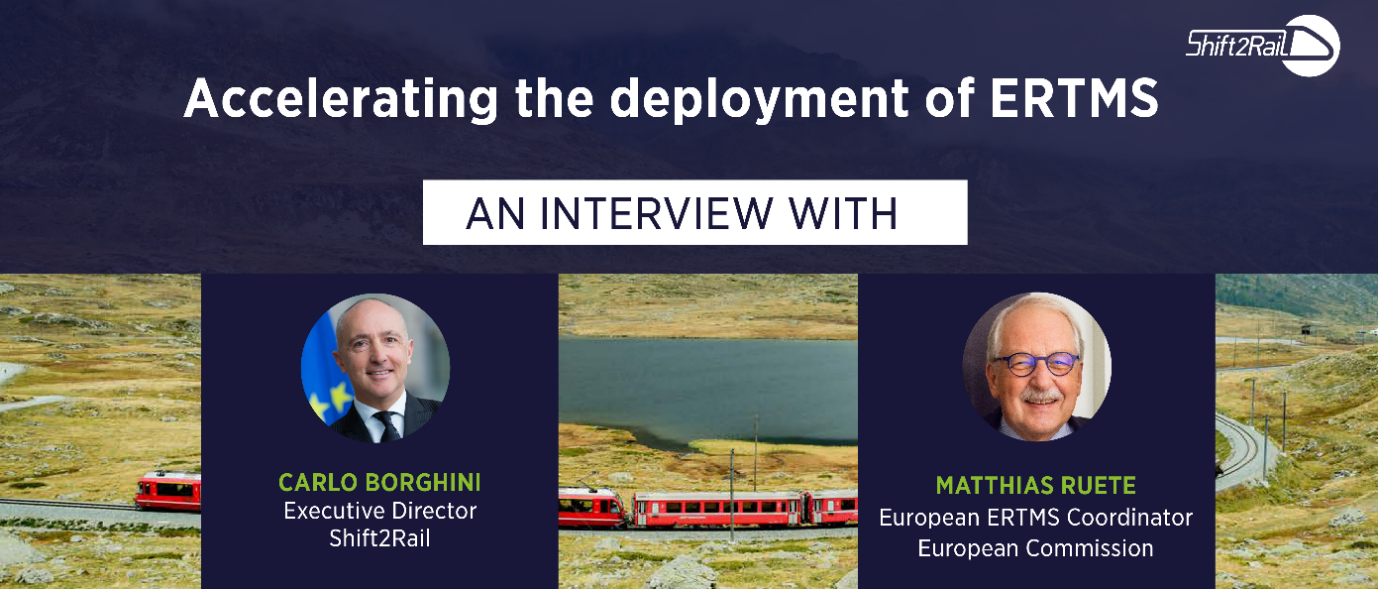
Carlo Borghini: You took over the work of ERTMS Coordinator more than 2 years ago now. What do you think are the key elements that can contribute to accelerating the deployment of ERTMS?
Matthias Ruete: Indeed, I took over the task of the European Coordinator for ERTMS in January of 2019. Since the appointment, I have made considerable efforts to monitor closely the state of play of ERTMS deployment, both on-board and trackside, and to investigate the major obstacles for its rapid rollout. Since then I have held more than 200 meetings with different stakeholders across Europe, unfortunately in the last year more via teleconferences rather than in real life.
As my main task as European Coordinator is the monitoring of the ERTMS deployment trackside, I will start my reply from this angle. At the moment, there are some 6,800 km on the Core Network Corridors in operation with ETCS (i.e. 14%) and 43% of what is planned by 2023 (EDP). Also around 7,000 km on the Core Network Corridors are under construction. If we look at EU-27 and Norway and Switzerland more than 41,000 km are contracted, including over 10,000 km lines in operation.
This is still not enough. Trackside deployment has to accelerate. We should make considerable efforts to gradually move from ERTMS islands to entire corridors and networks. In the first place we should focus infrastructure deployment on existing gaps and close them as soon as possible to allow continuous operation on longer stretches of the network with ERTMS only. A major focus also needs to be placed on ERTMS deployment in main rail nodes and accessibility of terminals. ERTMS becomes not an additional signalling system but is gradually replacing some class B systems on-board. Within this decade, it will be possible to operate with ERTMS (or ERTMS + 1 class B system) from Tallinn to Brussels, from Stockholm to Rome, and from Rotterdam to Constata. This will improve the business case of railway undertakings, especially international freight operators.
Currently, we experience a patchwork of approaches: only very few Member States do not have any credible plans to deploy ERTMS, not even on the core network; some are doing just the deployment on the core network; and more and more Member States are going for a network-wide deployment and decommissioning of class B systems. I am happy to say that gradually we are reaching a tipping point. Our ambition should be to use this paradigm change among Member States and push for not only Core Network Corridors or Core Network equipped with ERTMS by 2030 but an all-encompassing functioning ERTMS network in the EU, covering the comprehensive network and more, by 2040.
The deployment should be coupled with a regulatory deadline at EU level for decommissioning of class B systems trackside. Decommissioning of class B systems trackside will bring about significant maintenance savings for infrastructure managers, as deploying and then keeping several systems trackside is very costly and extremely complicated. Removal of class B systems must be done in a coordinated way with a sufficient transitional period. To start decommissioning class B trackside, rolling stock has to be equipped with ERTMS. At present there are probably some 5,000 vehicles equipped, but we need at least 38,000 of them.
Indeed, ERTMS is a system, deploying it trackside without equipping the rolling stock is very costly and does not bring about benefits. Railway undertakings, especially freight operators but also international passenger operators, cannot be left alone with equipping their fleet. It is vital to provide an enhanced public, including EU, assistance for the renewal of the fleet or support for retrofitting of the existing vehicles – whichever solution has a better benefit-cost ratio in a given context. In principle, retrofitting is several times more expensive than fitting, thus the preferred option should be fitting. We need stable and predictable budgets for retrofitting and upgrading; simplification of the authorization process, in particular for serial vehicles and the elimination of regulatory exemptions for newly built locomotives. Given the age structure of the European fleet, its renewal is imminent and it is a unique opportunity to render the fleet green and digital. If we do not impose a hard obligation to equip ERTMS on-board, we will still have a rolling stock with class B systems on-board (only) in 2070, thus class B trackside would have to be kept. As a result, we will have a dual on-board and dual trackside strategy for decades, what is not very efficient.
The ultimate objective should be to make ERTMS the sole signalling system in Europe. As a result, we will stop exchanging locomotives at the border or equipping them with several national systems on-board. ERTMS will also greatly improve safety as well as increase the capacity of the network through optimisation of the traffic. Thus, we will have more trains on the existing infrastructure without a need of building new lines or additional tracks.
Finally, we should guarantee that evolution will take place in a non-disruptive way. ERTMS will become the backbone of the future digital rail in Europe. We need to prepare our future together to define the overall European rail traffic management system. For rail to fully embrace digitalisation, the system needs to be more flexible and adaptable, with a “plug and play” approach.
Carlo Borghini: In Europe’s Rail Joint Undertaking, we have introduced the system pillar and the deployment coordination group. How can these be elements that support the acceleration of ERTMS deployment? How can we benefit from your experience and background to make this new structure effective and ensure it delivers?
Matthias Ruete: The System Pillar within Europe’s Rail is a dedicated structure – process, governance and resources – to provide a unique opportunity to allow the rail sector to converge on a strategic vision of the Single European Rail Area. A central task of the System Pillar will focus on the development of the CCS systems.
Simply put, the steps to evolve from the current systems to ERTMS at Level 2 or higher allow greater ambition to harmonise technical and operational systems, which, if successful, will increase the pace of innovation in rail – moving away from more than 30 systems. So what I hope to see from the System Pillar is the sector quickly converging on the evolution of the system, and much faster development and ultimately deployment of performance improving technologies, with ERTMS as the building block.
Let us utilise the Single Market to the benefit of rail, not continue to propagate national bespoke solutions, which significantly increase cost and complexity of rail. This is not only crucial for future developments, but also to deployment now. If there is a clear strategy for how the system as a whole will evolve, it only supports the case for more rapid deployment and benefit gain now.
Carlo Borghini: As former Director General of DG MOVE, how can we learn from other modes of transport to accelerate the evolution of rail?
Matthias Ruete: Each mode of transport is different. The operators vary from SME’s, successful start-ups which become dominant players, multi nationals to state owned enterprises. What they all have in common is that, at least in the long run, they cherish the benefits of the internal market and the international negotiating clout of the EU.
Equally, transport infrastructure is provided in different ways. This being said, all modes of transport converge in providing mobility and logistics as a service, and having climate and digitalisation as major drivers. This is why all modes of transport are in need of a strong vision (master plan) defining the (open) parameters of digitalisation, in particular traffic management, the common rules for safety and sustainability, and similar rules for a level playing field in the single European transport area.
My experience has been that aviation has for some years driven the European development both in terms of safety (EASA) and traffic management (SESAR), but also the maritime field has been quite innovative in terms of Safe Sea Net and the role of the maritime safety agency (EMSA). In road, a more decentralised approach prevails. However, this might change also with the requirements of the European Green Deal.
Rail is rapidly “learning” from the approaches taken by other modes, with a continuous strengthening of ERA (the European Union Agency for Railways), and hopefully a new role for Europe’s Rail with a strong system pillar and a more uniform ERTMS deployment strategy.
What is there to learn? I will put it simply: we need to create “ownership” of ERTMS – the more it is realised that it is in everybody’s interest and not only a Brussels led initiative, the quicker we will move ahead and also strategically strengthen European industry in the field.
